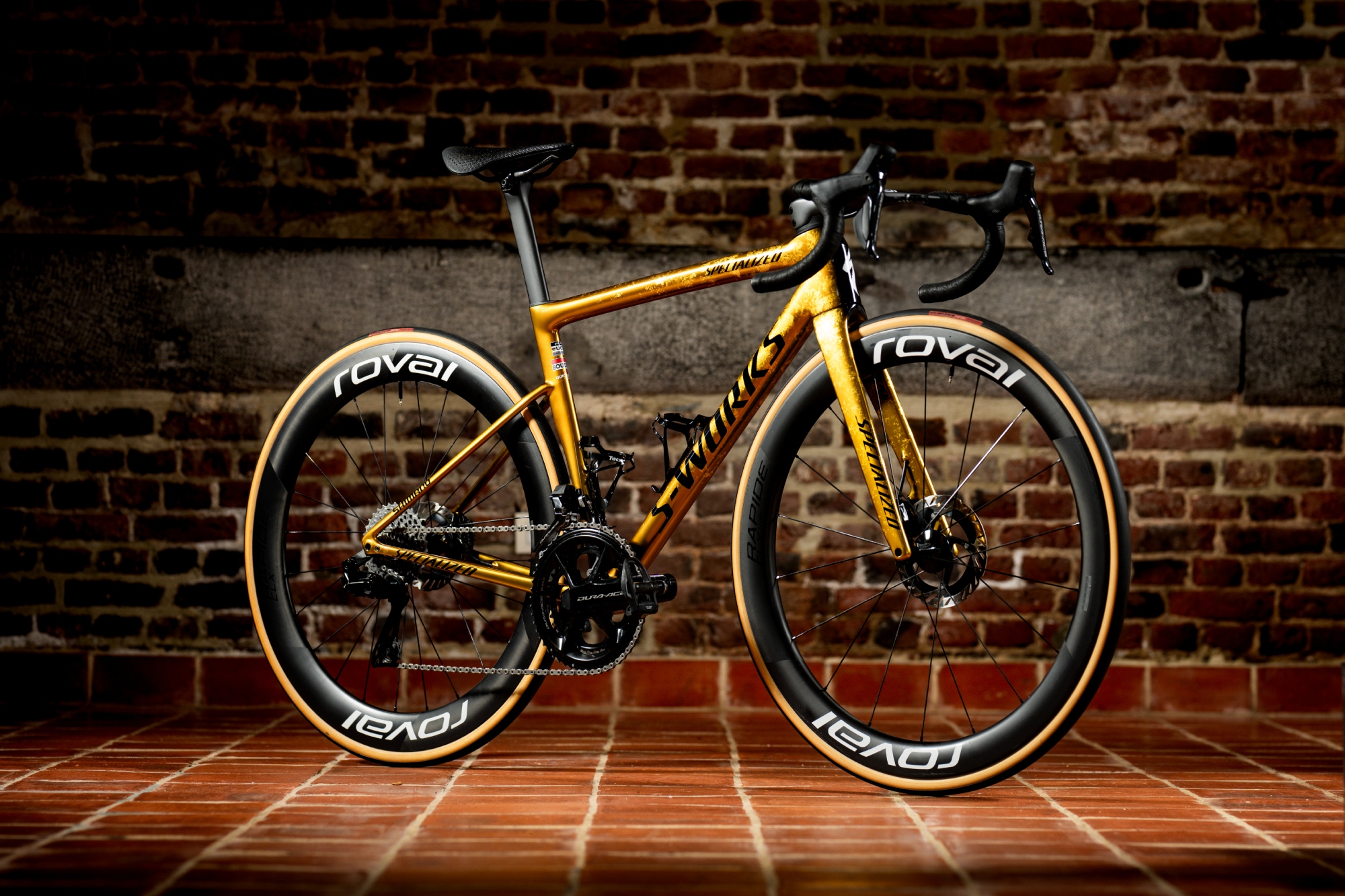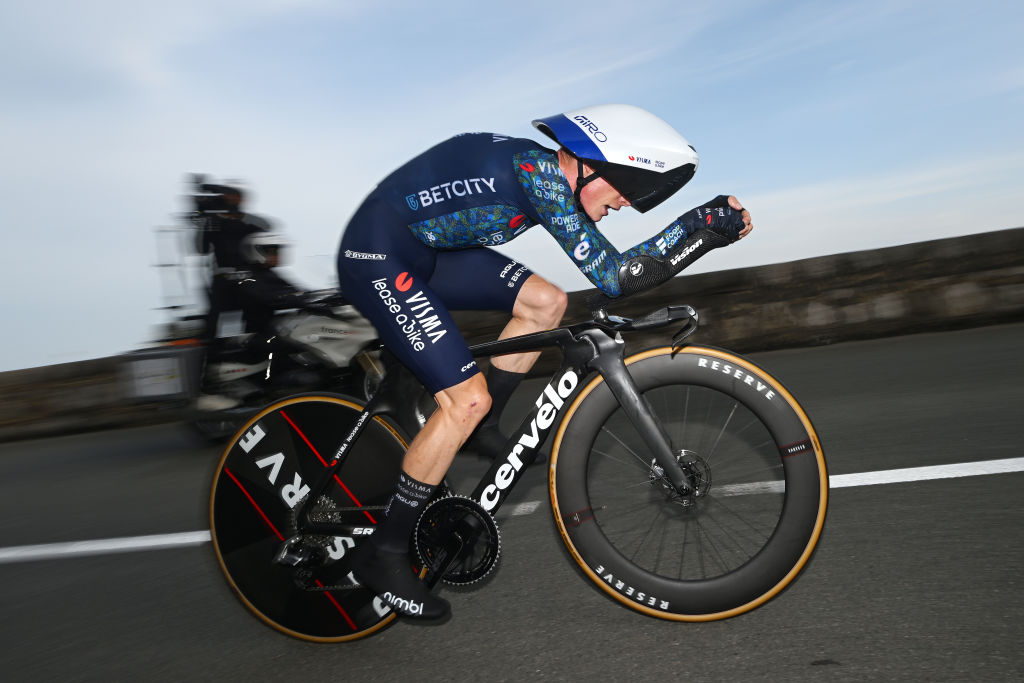
When Remco Evenepoel rolled down the time trial start ramp for the World Championship in Zurich on Sunday, he did so on a golden bike polished to such a deep lustre it looked almost as though it could have been made from the very material that English poet Percy Bysse Shelley described, not entirely inappropriately, as "a living god".
He wasn't the only rider on a golden bike. Like Evenepoel, Australia's Grace Brown won her time trial at the Paris Olympic Games in August, and opted for a gold finish. But the more muted hue on Brown's Lapierre couldn't match that of the Belgian's Specialized Shiv, which almost looked as though it had flakes of gold floating in its finish
In an era of muted and matte tones, the Shiv's metallic shine stood out even more. It looked, not like carbon, but like metal. It looked heavy.
And it's true – just how much the paint weighs could surprise many, but it's not because of the colour.
Just as with many other similar bikes, the paint on the world champ's machine weighs "around 250-300g", estimates Lee Prescott of bike studio and service centre Velo Atelier.
A not inconsiderable amount, given that frame weights are often quoted at 800g or 900g.
As well as supplying boutique parts and services, Prescott paints bikes (and sometimes strips paint off them) for a living, so he knows a thing or two about these things.
If that is a surprise on its own, it may also raise an eyebrow to learn that Evenepoel's bullion-looking Shiv isn't really carrying anything extra, and the same can be said of the Tarmac SL8 he will use on Sunday's road race.
"It's quite a new finish he's got on there, it's called hydro chrome," Prescott says. "It can weigh a little bit more, but we're talking a few grams.
"The 250-300g is probably towards the upper end, for a [bike with] a more complex design [such as a TT machine]," he adds. "Because obviously the more complex the design the more paint you're adding."
At the other end of the scale, Prescott gives the example of a straightforward road frame like that of the Specialized Aethos, which carries significantly less paint weight.
"It's not aero, it's just a simple, clean, round-tubed carbon frame. The paint on that probably weighs around 50g," he says.
Bike paint, including the hydro plating used on Evenepoel's bike, uses three layers – a primer, a base coat which essentially adds the colour, and a 2K top sealing coat.
Yet surprisingly once again, all these layers only add between 0.1 and 0.2mm.
The paint-free time trial bike that Jonas Vingegaard used in this year's Tour de France looks less like a wild shot at the most marginal of gains when you consider how much paint a complex frame like that could be dragging around. And it begs the question, why aren't we seeing more professionals on bare-bones carbon, especially on mountain stages where weight counts for so much?

As Prescott says: "At the end of the day, the paint is advertising, and that's essentially what the riders are being paid for. Plus there's a lot of the guys at the moment, especially on the smaller frame sizes, where we're having to put lead weights into the seat tube to make them up to the UCI limit. Saving weight on paint isn't something that we worry about normally."
That said, Prescott has been asked to strip the paint – or at least thin it down – from bikes and even wheels in cases where a rider has been keen to save as much weight as possible for a hill-climb.
"The rims were really nice but they had a really thick gloss," he says of the latter example, emphasising that it isn't something anyone should try at home.
The final point to mull over is whether your super-light frame is actually as super-light as you thought it was. Manufacturers tend to quote painted weights for frames, but not always. If such things are a deal breaker, check the small print.







